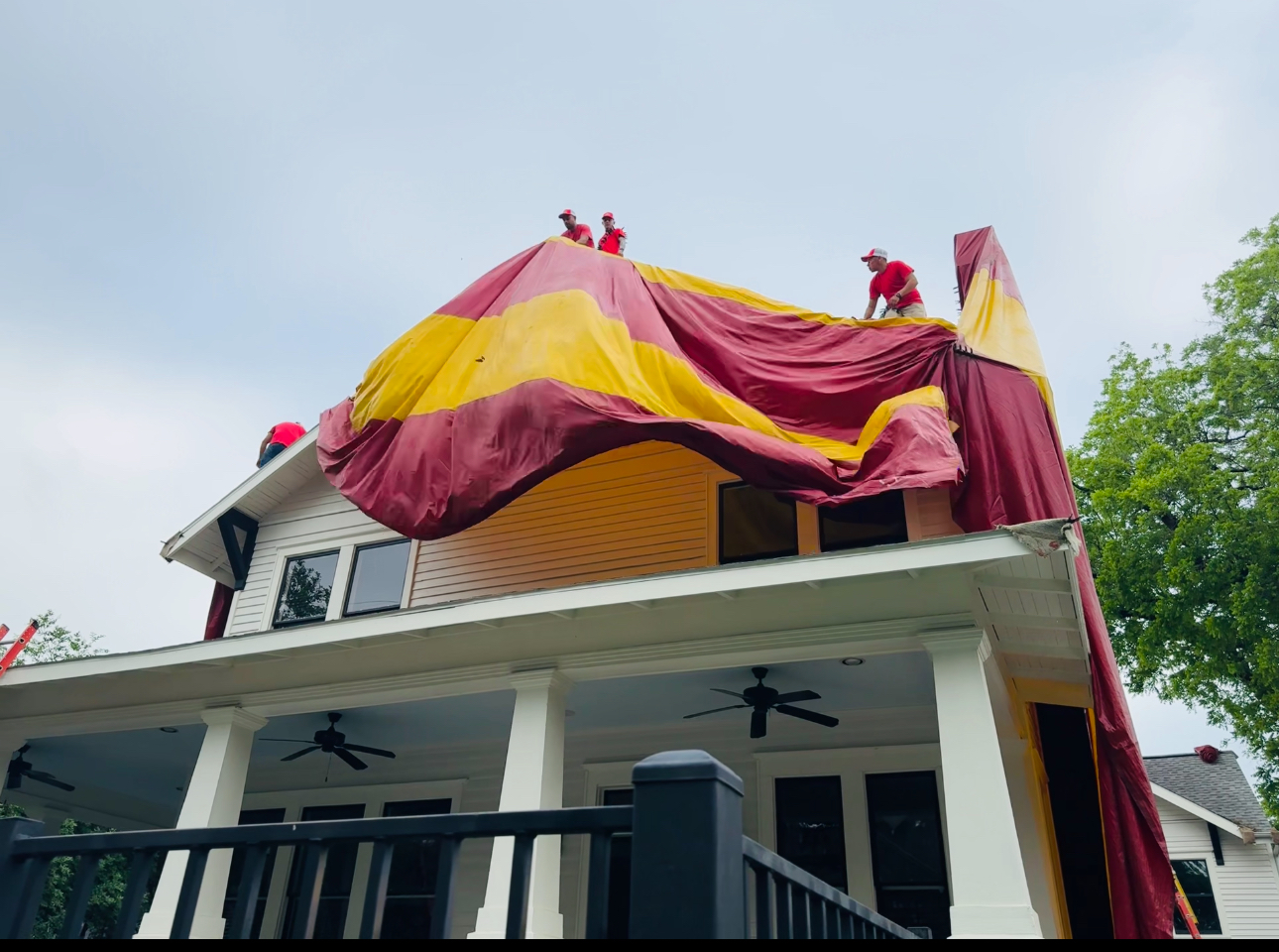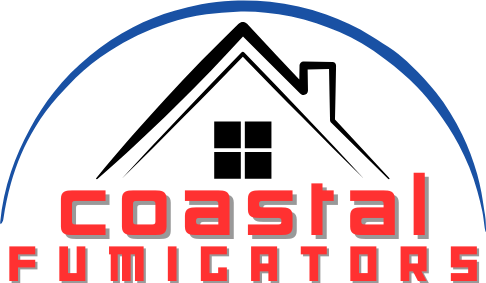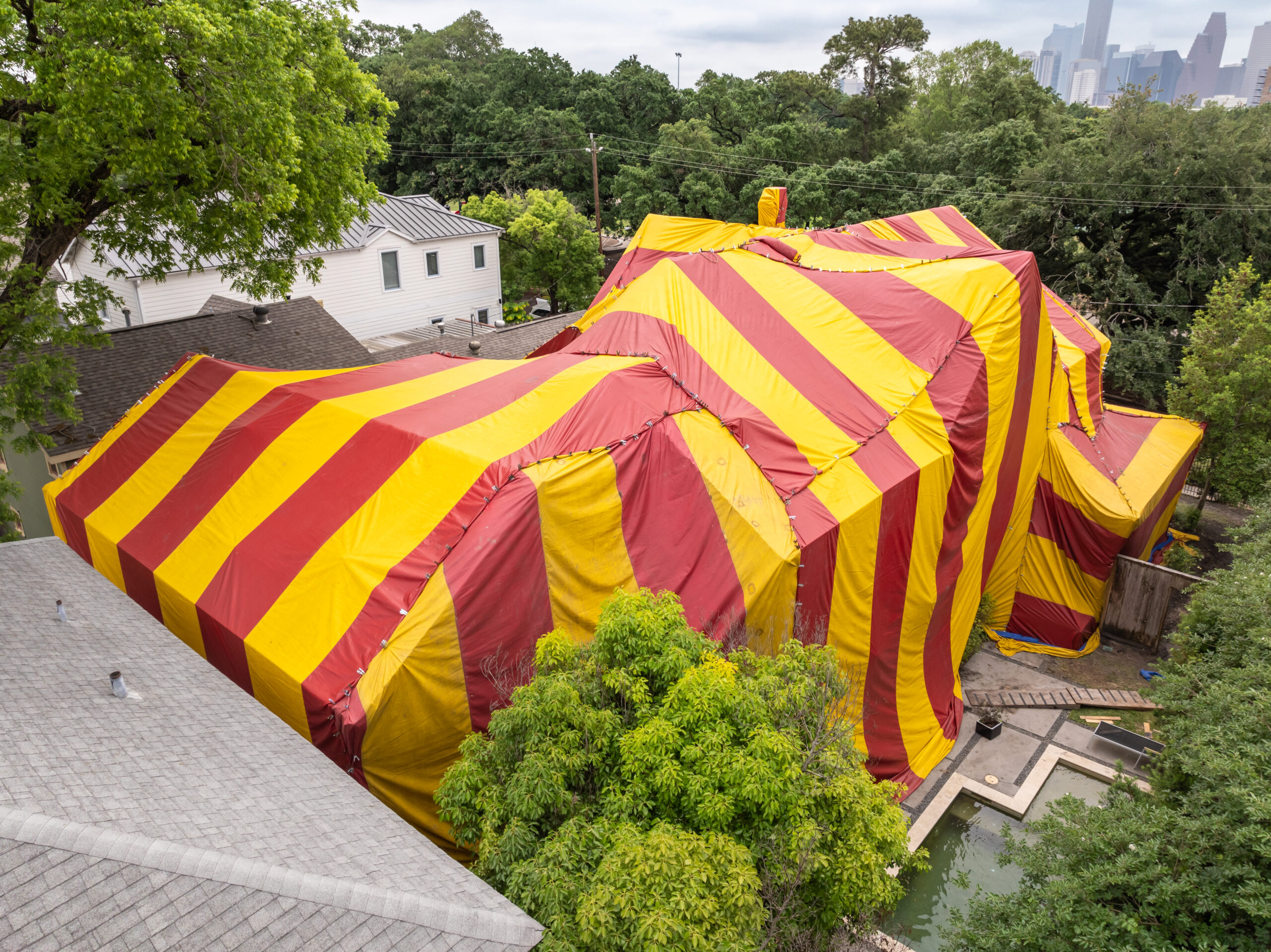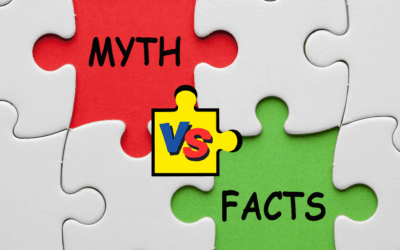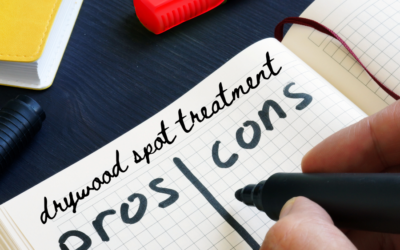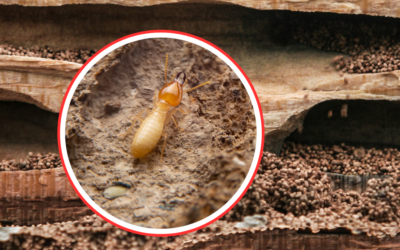Understanding Pest Fumigation
Fumigation is a pest control method involving gaseous chemicals (fumigants) to eliminate pests within an enclosed space. The process is used in various settings, including warehouses, ships, and homes, to eradicate pests completely. The fumigation process involves sealing the area to be treated and introducing the fumigant gas, which penetrates all the cracks and crevices of the structure and kills the targeted pests. Fumigation is the most effective treatment in eliminating drywood termites and powderpost beetles.
How to Spot the Signs of Drywood Termites and Powderpost Beetles
Fumigation companies rely on thorough visual inspections to identify the presence of drywood termites and powderpost beetles. Early detection is crucial, so understanding what to look for is an important step in preventing an infestation.
Drywood Termites
For drywood termites, telltale signs include small, pellet-shaped droppings (frass) resembling sawdust. It is often found near the infested wood with small, round openings called kick-out holes where termites push out frass. Winged termites (alates) might be spotted near windows or light sources during the swarming season. Damaged wood may produce a hollow sound when tapped.
Powderpost Beetles
In the case of powderpost beetles, their presence is indicated by a fine, powdery frass and tiny exit holes (1/32 to 1/16 inch in diameter) in wood surfaces. The wood interior may also be riddled with tunnels, reducing it to a powdery consistency. By recognizing these visual clues, pest control professionals can accurately assess infestations and recommend the best course of action for treatment.
The Process of Structural Fumigation
While the structural fumigation process may seem complex, understanding each step can help ease any concerns and prepare you for what to expect. The fumigation process follows a detailed, step-by-step approach to ensure that your property is both pest-free and safe for re-entry. From initial preparations to the final inspection, every stage is handled with precision and care. Here are the key stages in the fumigation process to give you a clear understanding of what will take place.
1. Interior Prep
The fumigation process begins with preparing the interior of your home or business. This includes removing specific items that may be affected by the fumigant, such as food, plants, and medicines. Additionally, all interior doors, cabinets, and drawers should be left open to allow the fumigant to reach every area of the structure. Proper preparation ensures that the fumigation process will be thorough and effective, eliminating pests from even the most hidden places.
2. Exterior Prep
In addition to interior preparations, certain exterior measures are required before fumigation can begin. This might involve removing fences, decking, or other obstacles around the perimeter of your home or business to ensure the tenting material can be securely placed. It may be necessary to trim back tree limbs, shrubs, and plants that might obstruct the tenting process. By taking these steps, the fumigation team can create a sealed environment around your property, which is essential for effective treatment.
3. Tent Formation
Once your property is fully prepped, the next step is forming the tent. A large PVC-coated canvas is carefully draped over the entire structure, creating a sealed environment. The tent is anchored securely using clamps and weighted sandbags to ensure it remains in place and prevents any fumigant gas from escaping. This step is crucial, as it allows the fumigant to circulate throughout the entire building, reaching all areas where pests might be hiding.
4. Fumigation
With the tent in place, the fumigation process can begin. The fumigant gas is pumped into the sealed environment at a precise concentration level. This gas will penetrate every part of your home or business, including cracks, crevices, and hidden spaces where pests might reside. The fumigant eliminates all pests within the structure, ensuring no area is left untreated. The length of time the fumigant remains in your property depends on the size of the structure and the type of pests being targeted.
5. Tent Removal
After a state-certified professional has determined that the fumigation process is complete and the fumigant has done its job, the tent is carefully removed. The removal process includes removing the clamps, sandbags, and tenting material to ensure no fumigant is trapped inside.
6. Release & Measure
Once the tent is removed, the next step is to vent and measure the air quality inside the structure. The property will be aerated to remove any remaining fumigant gas, ensuring that the air is safe to breathe. Specialized equipment is used to measure the concentration of the fumigant, and the property will only be cleared for re-entry once the levels are safe. This process ensures that your home or business is not only pest-free but also safe for you to return.
7. Welcome Back
Finally, after the air quality has been confirmed safe, you are welcomed back into your property. The structure is now 100% pest-free, and you can return with peace of mind that all pests have been eradicated. You can enjoy a pest-free environment once again!
Coastal Fumigators: The Fumigation Experts
Coastal Fumigators is the premier fumigation company in the State of Texas. With over 100 years of combined experience, we are proud to provide a 100% effective solution for eliminating Drywood Termites and Powderpost Beetles. Our team of EPA-regulated and State Certified Structural Fumigation Experts serves the Greater Houston area and other major metropolitan areas in Texas.
We prioritize consumer safety and satisfaction by utilizing state-of-the-art equipment and proprietary methods. Our expert team ensures that the fumigation process is carried out with the utmost care and professionalism, providing peace of mind and a pest-free environment. At Coastal Fumigators, we are recognized experts in fumigation training. We proudly provide training for pest control professionals with the Texas Department of Agriculture.
From the initial inspection to the final step, our team is dedicated to supporting you every step of the way. We prioritize building trust with our clients and are committed to ensuring you have complete confidence in the quality of our service.
Want to learn more about the professionals behind our success? Visit our team page to read about our extensive experience and commitment to excellence.
